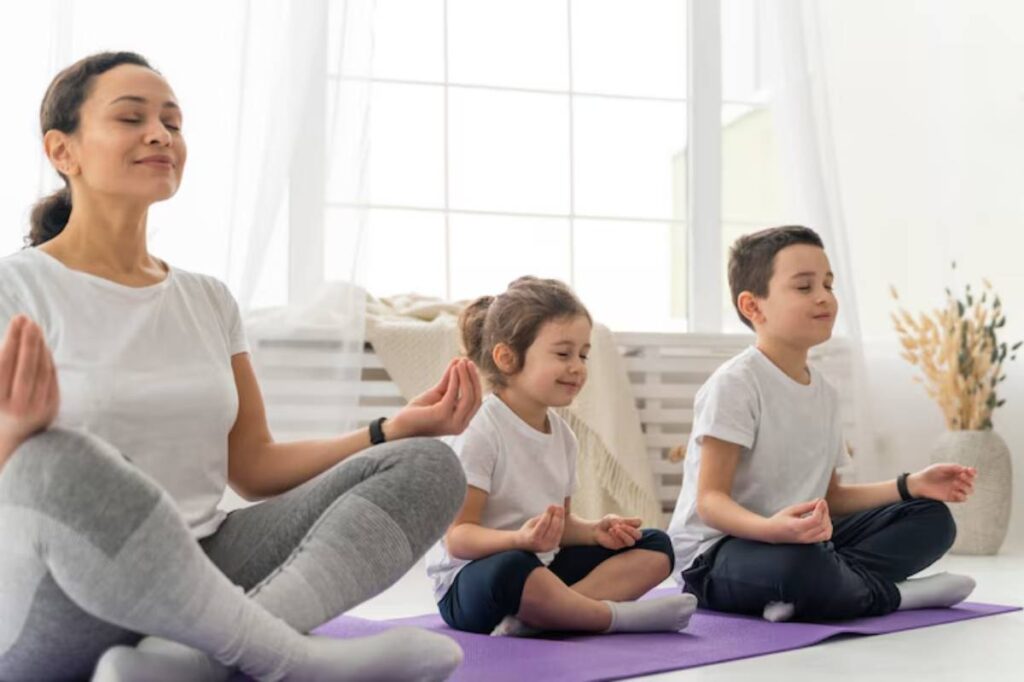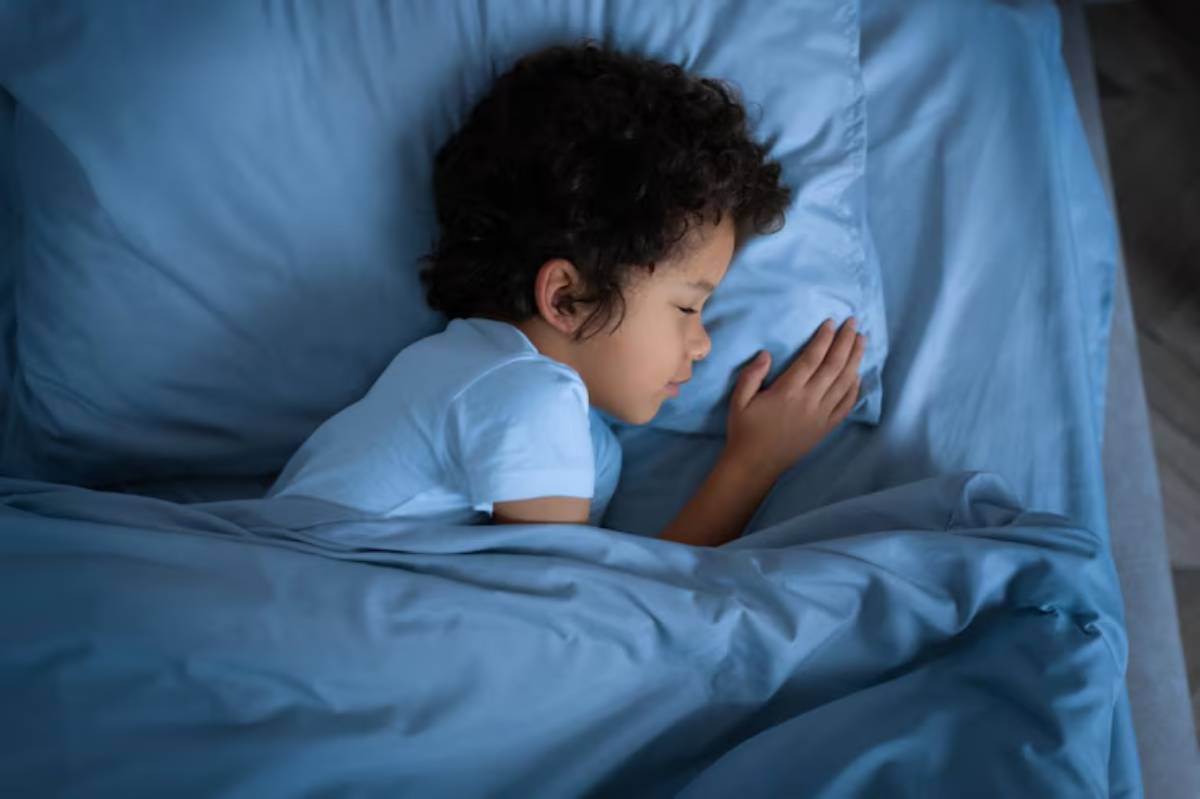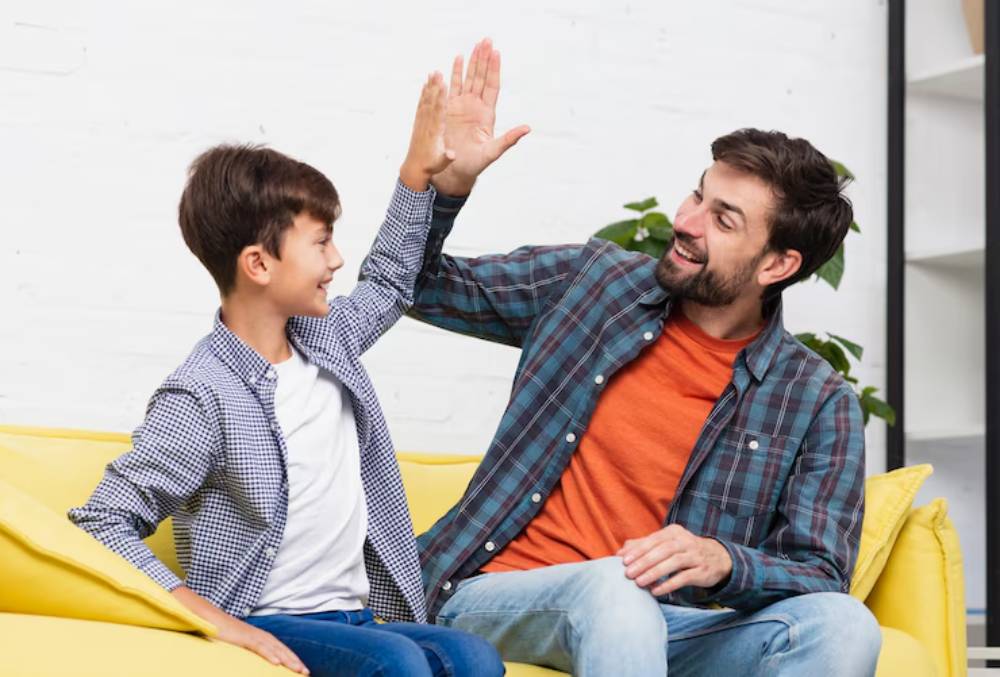The Health & Wellness Blog

Teaching Children Meditation: A Step-by-Step Guide
In today’s fast-paced world, distractions are aplenty, and stress levels are on the rise. Teaching children meditation can be a game-changer. Meditation is not just for adults seeking solace from their hectic lives. It’s a powerful tool for children, too. This blog looks at teaching meditation to kids. It explains why it’s important and how you can help your child with this valuable skill.
The importance of children’s meditation cannot be overstated. It helps young minds develop focus, emotional resilience, and a sense of calm. However, many parents and educators are unsure where to begin. This guide will help you introduce mindfulness to kids with easy steps and helpful tips.
Key Benefits / Why It Matters

Enhancing Focus and Concentration
Children today are constantly bombarded with information, from school assignments to digital devices. Meditation offers a sanctuary from this chaos. It helps children improve their focus and concentration. Practising mindfulness helps kids focus more on their studies and activities.
Emotional Resilience and Stress Management
Teaching meditation to children equips them with the skills to manage their emotions effectively. When they watch their thoughts and feelings without judging, they grow stronger against stress and anxiety. Emotional intelligence is key to their well-being. It can greatly affect their social life and school performance.
Improved Sleep Patterns

Children often struggle with sleep due to overstimulation and anxiety. Meditation can help regulate their sleep patterns, allowing for a more restful night’s sleep. Parents can use bedtime meditation routines to create a calming space. This helps kids relax and feel safe.
Building Self-awareness and Empathy
Mindfulness helps kids become more aware of themselves. It allows them to understand their feelings and reactions better. This awareness can boost empathy and compassion in children. They start to see and value different perspectives and experiences.
Real-life Applications and Data-backed Insights
Research has shown that meditation can profoundly impact children’s cognitive and emotional development. A study from the University of California found that kids who practised mindfulness improved a lot in attention and behaviour. Schools that use meditation in classes have fewer behaviour problems and better grades.
Additional Expert Tips & Common Mistakes to Avoid
Start Simple and Make it Fun
When teaching children to meditate, begin with simple practices. These should be easy to understand and fun to engage with. Short guided meditations with visuals or stories can spark their imagination and make it fun. Remember, the goal is to create a positive association with meditation, not to enforce it as a chore.
Be Patient and Consistent
Consistency is key when introducing children to meditation. Establish a regular routine, whether it’s a few minutes in the morning or before bedtime. However, it’s crucial to be patient and not force the practice. Kids might resist sitting still at first. But with time and gentle encouragement, they will learn to appreciate the practice more.
Create a Dedicated Meditation Space
Having a designated space for meditation can help children associate the practice with a sense of calm and focus. This space doesn’t need to be elaborate. A cosy corner with a soft cushion and calming touches works well. You can add soft lighting or nature sounds for a soothing vibe. Encourage your child to personalise this space, making it a place they look forward to visiting.
Avoid Overcomplicating the Practice
One common mistake parents make is overcomplicating meditation. Remember, the essence of mindfulness for kids is simplicity. Avoid using complex techniques or jargon that might confuse or overwhelm them. Focus on basic breathing exercises and body awareness. Then, slowly add advanced practices as they feel more comfortable.
Encourage Open Communication

Make a space where your child can freely share their thoughts and feelings about meditation. Encourage them to share their experiences and any challenges they may face. This open dialogue helps you customise the practice for their needs. It also ensures a positive experience.
Advanced Insights / Expert Recommendations
Incorporating Mindfulness into Daily Activities
Meditation doesn’t always have to be a formal practice. Encourage your child to practice mindfulness every day. They can do this while eating, walking, or playing. Teach them to be present and fully engaged in whatever they are doing, noticing the sensations, sounds, and smells around them. This method helps kids build a mindful attitude that goes beyond meditation.
Using Technology Mindfully
Technology can often be a source of distraction. It can also be a valuable tool for teaching meditation to children. Numerous apps and online resources are designed specifically for mindfulness for kids. These platforms provide guided meditations, interactive exercises, and calming music. They can boost your meditation experience. It’s important to use these tools carefully. They should support, not replace, personal interaction and guidance.
Introducing Mindfulness in Schools
Schools play a vital role in promoting mindfulness for kids. Integrating meditation into the curriculum helps children manage stress and boost focus. Work with teachers and administrators to bring mindfulness programs to schools. Make sure these programs match the school’s educational goals and values.
Tailoring Meditation to Different Ages and Needs
Each child is unique. Their meditation practice should match their needs and growth stage. Younger kids may do better with short, fun sessions. Older kids can handle longer, deeper practices. Consider your child’s interests and likes. Adjust the practice to keep them engaged and excited.
Conclusion: Empowering Children Through Meditation: Start Today
Teaching children meditation is a gift that can have a lasting impact on their lives. Introducing mindfulness to kids gives them the tools to handle the modern world with ease and strength. The journey of meditation is personal and always changing. Embrace the process and celebrate small victories along the way.
As you start this journey with your child, think about how meditation can greatly help their growth and well-being. Encourage them to explore with curiosity and openness. Join in creating a mindful family culture that values presence and connection.
In closing, we invite you to take the first step towards teaching meditation by setting aside a few minutes each day to practice together. Mindfulness exercises, like breathing or guided visualisations, can boost your connection. They also lay the groundwork for lasting well-being. What will your first mindful moment look like today?









